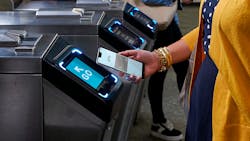Google study shows New Yorkers are most eager to return to transit use
Google commissioned a study in late spring/early summer, to assess how people living in major cities in the U.S. feel about resuming their pre-pandemic transit habits.
The online survey conducted by Allison+Partners Research + Insights found about two out of three people wanted to return to regular transit use.
Who is ready to get back to their pre-pandemic transit routine?
• 68 percent of New York City respondents
• 60 percent of San Francisco respondents
• 59 percent of Washington, D.C., respondents
• 56 percent of Chicago respondents
The reasons survey respondents gave for wanting to get back to transit could all fall within the category of convenience. Survey respondents said not worrying about parking, having a relaxing commute and having time for reflection as reasons for why they missed transit.
What do people miss about transit?
• 54 percent of respondents answered “not stressing about parking”
• 40 percent cited the ease of getting around
• 30 percent missed reflecting on their day
• 30 percent answered relaxing, such as reading or listening to a podcast
How respondents want to pay for their return to transit has shifted from prior to the pandemic. In a blog outlining the survey results, Google Pay Product Manager Alan Stapelberg explains mobile contactless payments increased in popularity by 11 percentage points versus cash, which decreased from 42 percent to 32 percent.
“What’s more, one in two people who didn’t use mobile contactless payments before the COVID-19 pandemic say they would be more comfortable riding if there were touch-free options such as mobile contactless payments or ticketing,” wrote Stapelberg. “Of course, contactless payments yield far more than a touch-free way of paying. Three in four people said the convenience factor is what they like most about contactless transit payments.”
While Google Pay has worked with transit agencies in major cities to deliver tap-and-pay options, a partnership with Token Transit is allowing the option to be brought to more than 100 cities across the country in bigger and smaller towns.
About the Author

Mischa Wanek-Libman
Group Editorial Director
Mischa Wanek-Libman is director of communications with Transdev North America. She has more than 20 years of experience working in the transportation industry covering construction projects, engineering challenges, transit and rail operations and best practices.
Wanek-Libman has held top editorial positions at freight rail and public transportation business-to-business publications including as editor-in-chief and editorial director of Mass Transit from 2018-2024. She has been recognized for editorial excellence through her individual work, as well as for collaborative content.
She is an active member of the American Public Transportation Association's Marketing and Communications Committee and served 14 years as a Board Observer on the National Railroad Construction and Maintenance Association (NRC) Board of Directors.
She is a graduate of Drake University in Des Moines, Iowa, where she earned a Bachelor of Arts degree in Journalism and Mass Communication.
